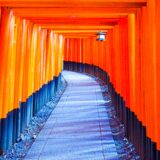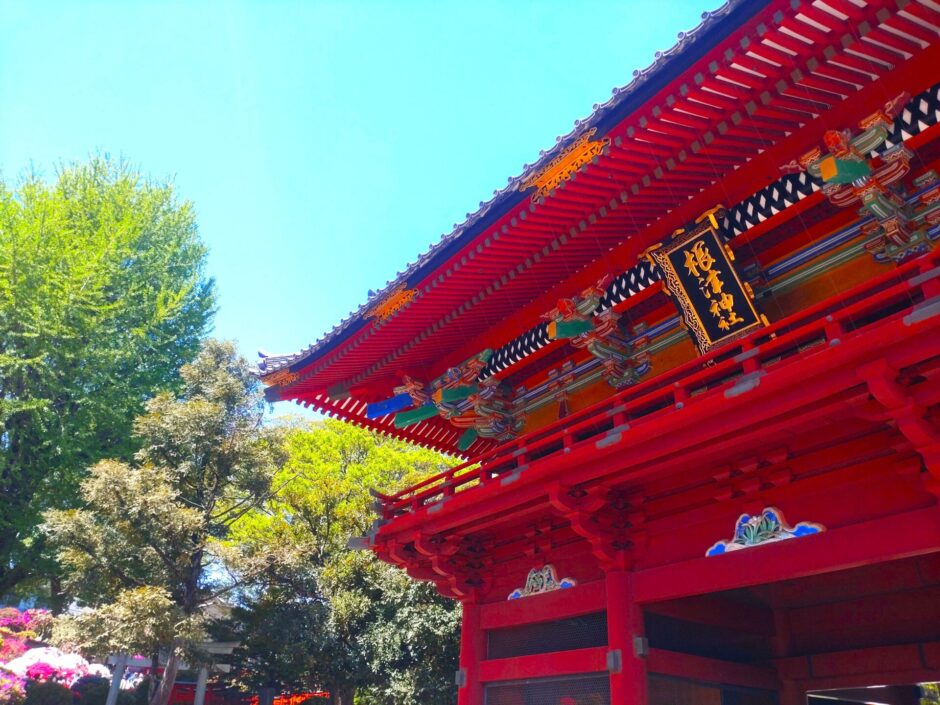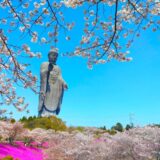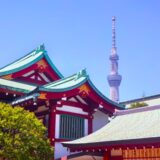【Nezu Shrine summary】
Nezu Shrine, also called Nezu-gongen, is located in Nezu, Bunkyo-ku, Tokyo. The main shrine, worship hall, tower gate, Chinese-style gate, and open walls, all built in the early Edo period, are designated as National Important Cultural Properties of Japan. The deities of worship are Susano-no-mikoto, Oyamakui-no-mikoto, and Hondawakeno-mikoto, and the deities of worship are Okuninushi-no-mikoto and Sugawara no Michizane. The shrine offers a wide range of blessings, from warding off calamities and evil spirits, to marriage, business prosperity, and academic achievement.
【Nezu Shrine precincts】
![Nezu Shrine and Otome Inari Shrine [Tokyo] DSC 1371 1024x768 - Nezu Shrine and Otome Inari Shrine [Tokyo]](https://japan-shrine.info/wp-content/uploads/DSC_1371-1024x768.jpg)
The first building you see after crossing the sacred bridge on the main approach to Nezu Shrine is the Toromon Gate. This tower gate was built in the Edo period (1603-1867) and is the oldest tower gate in Tokyo.
![Nezu Shrine and Otome Inari Shrine [Tokyo] DSC 1317 1024x768 - Nezu Shrine and Otome Inari Shrine [Tokyo]](https://japan-shrine.info/wp-content/uploads/DSC_1317-1024x768.jpg)
Nezu Shrine is widely known as the shrine of the Tokugawa family. The Gongen-zukuri main shrine building, the Shinto hall, the hall of worship, the Karamon gate, the Nishimon gate, the open wall, and the Toromon gate, all of which were completed during the great construction project known as “Tenka Fuchin” during the reign of Tsunayoshi Tokugawa, are still standing and are designated as National Important Cultural Properties of Japan.
![Nezu Shrine and Otome Inari Shrine [Tokyo] DSC 1315 1024x768 - Nezu Shrine and Otome Inari Shrine [Tokyo]](https://japan-shrine.info/wp-content/uploads/DSC_1315-1024x768.jpg)
The swastika on the roof is a remnant of the period before the Shinto and Buddhist Separation Order of the Meiji era.
【Maiden Inari Shrine in the precincts of Nezu Shrine summary】
![Nezu Shrine and Otome Inari Shrine [Tokyo] DSC 1335 1 1024x768 - Nezu Shrine and Otome Inari Shrine [Tokyo]](https://japan-shrine.info/wp-content/uploads/DSC_1335-1-1024x768.jpg)
Otomeinari Shrine was founded in 1706, when Nezu Shrine was built, as a symbol of women who nurture life and pray for a bountiful harvest. The deity, Kurainatomi-no-mikoto, is a female deity, and the women of the Nezu brothels that once existed in the Nezu area were deeply devoted to the shrine, making it a power spot with a deep connection to women.
【Nezu Shrine precincts Otome Inari Shrine Senbon Torii (Thousand torii)】
『I think the reason why “Nezu Shrine” has become so popular is also because of the Senbon-torii gate at “Otome Inari Shrine,” which is a regent shrine.
![Nezu Shrine and Otome Inari Shrine [Tokyo] DSC 1343 1024x768 - Nezu Shrine and Otome Inari Shrine [Tokyo]](https://japan-shrine.info/wp-content/uploads/DSC_1343-1024x768.jpg)
It is said that if you visit the shrine from north to south, you will lose evil spirits and your wishes will come true. Most of the visitors went in the opposite direction…
![Nezu Shrine and Otome Inari Shrine [Tokyo] DSC 1322 1024x768 - Nezu Shrine and Otome Inari Shrine [Tokyo]](https://japan-shrine.info/wp-content/uploads/DSC_1322-1024x768.jpg)
The bright vermilion color of the shrine adds to the sacred feeling, but many people just passed by, and I did not see a single person paying their respects. It is a pity. I would appreciate it if you could join hands with me for a moment.
![Nezu Shrine and Otome Inari Shrine [Tokyo] DSC 1332 1024x768 - Nezu Shrine and Otome Inari Shrine [Tokyo]](https://japan-shrine.info/wp-content/uploads/DSC_1332-1024x768.jpg)
However, the vermilion torii gates of Otome Inari Shrine are best visited during the azalea season when the azaleas are in full bloom, as their vermilion color blends with the azalea’s various colors to create an unforgettable atmosphere.
![Nezu Shrine and Otome Inari Shrine [Tokyo] DSC 1330 1024x768 - Nezu Shrine and Otome Inari Shrine [Tokyo]](https://japan-shrine.info/wp-content/uploads/DSC_1330-1024x768.jpg)
Speaking of “Senbon-torii”, Fushimi Inari-taisha Shrine in Kyoto is famous for its “Senbon-torii”, but if you want to experience “Senbon-torii” in a minimalistic way, this is a good place to start. By the way, “Senbon” in Japanese means “a lot.
 Fushimi Inari-taisha Shrine [Kyoto]
Fushimi Inari-taisha Shrine [Kyoto]
【Azalea Garden in the precincts of Nezu Shrine】
![Nezu Shrine and Otome Inari Shrine [Tokyo] DSC 1344 1024x768 - Nezu Shrine and Otome Inari Shrine [Tokyo]](https://japan-shrine.info/wp-content/uploads/DSC_1344-1024x768.jpg)
Entrance fees vary, ranging from 200 yen to 500 yen. When in full bloom, azaleas of all kinds bloom and are a sight to behold. Although the azaleas are wonderful to look at from the outside, they are a little different when you enter the park to appreciate them.
![Nezu Shrine and Otome Inari Shrine [Tokyo] DSC 1350 1024x768 - Nezu Shrine and Otome Inari Shrine [Tokyo]](https://japan-shrine.info/wp-content/uploads/DSC_1350-1024x768.jpg)
There are about 300 varieties of azaleas, and the early and mid azaleas were in full bloom, making it even more spectacular than I had imagined.
![Nezu Shrine and Otome Inari Shrine [Tokyo] DSC 1363 1024x768 - Nezu Shrine and Otome Inari Shrine [Tokyo]](https://japan-shrine.info/wp-content/uploads/DSC_1363-1024x768.jpg)
The azalea garden opens at 9:30 am. I arrived around 10:00 a.m. and took a stroll. After 11:00 a.m., the line of people entering the azalea garden from the direction of Nezu Station was several hundred meters long.
Seasonally, it would be even more enjoyable to visit in conjunction with the wisteria festival at Kameido Tenjinja Shrine. (We recommend that you visit Nezu Shrine and then Kameedo-jinja Shrine in that order to avoid crowds.)
【Nezu Shrine GOSHUIN】
![Nezu Shrine and Otome Inari Shrine [Tokyo] 2024 04 21 15 00 Office Lens 1024x753 - Nezu Shrine and Otome Inari Shrine [Tokyo]](https://japan-shrine.info/wp-content/uploads/2024_04_21-15_00-Office-Lens-1024x753.jpg)
【Nezu Shrine Nearby attractions】
Around Nezu Shrine, there are many famous shrines and temples such as Ueno Toshogu Shrine, Yushima Tenjin Shrine, and Kanda Myojin Shrine, so it is a good place to visit shrines and temples.
【Nezu Shrine Access】
Manager’s Comments
I think it is a place loved by the locals as well, with small children from nursery schools playing in the precincts of the temple. The Senbon-torii gate is very picturesque and popular with many foreign visitors. The azalea garden is more crowded than you might imagine, so if you arrive around noon, it will take one to two hours if you wait for your turn. Be aware that the azalea season is far from a tranquil atmosphere.
1-28-9, Nezu 1-chome, Bunkyo-ku, Tokyo 113-0031, Japan
※Free parking available
 Tour of Japanese shrines and temples
Tour of Japanese shrines and temples 

![Nezu Shrine and Otome Inari Shrine [Tokyo] DSC 1389 520x300 - Nezu Shrine and Otome Inari Shrine [Tokyo]](https://japan-shrine.info/wp-content/uploads/DSC_1389-520x300.jpg)
![Nezu Shrine and Otome Inari Shrine [Tokyo] DSC 0192 520x300 - Nezu Shrine and Otome Inari Shrine [Tokyo]](https://japan-shrine.info/wp-content/uploads/DSC_0192-520x300.jpg)
![Nezu Shrine and Otome Inari Shrine [Tokyo] DSC 0248 520x300 - Nezu Shrine and Otome Inari Shrine [Tokyo]](https://japan-shrine.info/wp-content/uploads/DSC_0248-520x300.jpg)
![Nezu Shrine and Otome Inari Shrine [Tokyo] DSC 0261 520x300 - Nezu Shrine and Otome Inari Shrine [Tokyo]](https://japan-shrine.info/wp-content/uploads/DSC_0261-520x300.jpg)
![Nezu Shrine and Otome Inari Shrine [Tokyo] DSC 0247 1 150x150 - Nezu Shrine and Otome Inari Shrine [Tokyo]](https://japan-shrine.info/wp-content/uploads/DSC_0247-1-150x150.jpg)
![Nezu Shrine and Otome Inari Shrine [Tokyo] DSC 0153 1 150x150 - Nezu Shrine and Otome Inari Shrine [Tokyo]](https://japan-shrine.info/wp-content/uploads/DSC_0153-1-150x150.jpg)
![Nezu Shrine and Otome Inari Shrine [Tokyo] DSC 03512 150x150 - Nezu Shrine and Otome Inari Shrine [Tokyo]](https://japan-shrine.info/wp-content/uploads/DSC_03512-150x150.jpg)
![Nezu Shrine and Otome Inari Shrine [Tokyo] DSC 0494 Object Removal 150x150 - Nezu Shrine and Otome Inari Shrine [Tokyo]](https://japan-shrine.info/wp-content/uploads/DSC_0494_Object-Removal-150x150.jpg)

